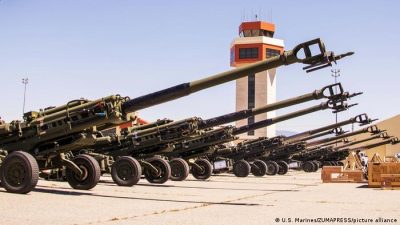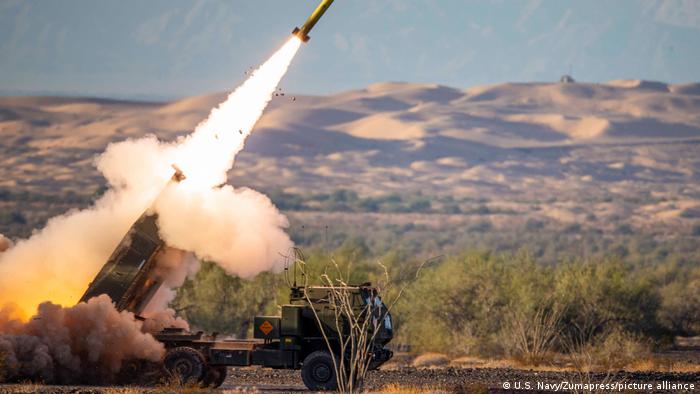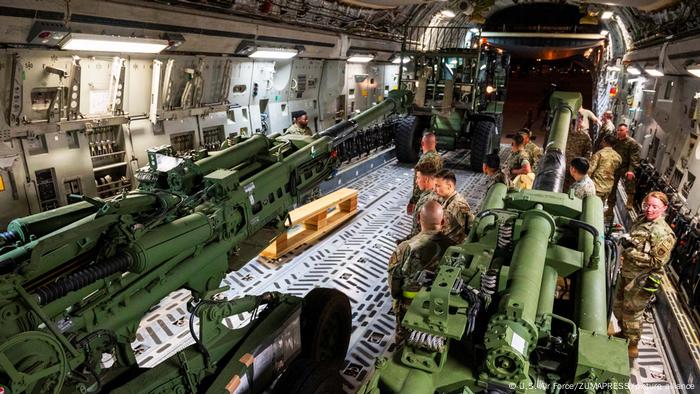Military Hardware for Ukraine: Who Plans to Supply What?

All Global Research articles can be read in 51 languages by activating the “Translate Website” drop down menu on the top banner of our home page (Desktop version).
To receive Global Research’s Daily Newsletter (selected articles), click here.
Visit and follow us on Instagram, Twitter and Facebook. Feel free to repost and share widely Global Research articles.
***
Article by Deutcshe Welle. Selected Excerpts
Ukrainian President Volodymyr Zelenskyy has been calling for heavy weapons to repel the Russian invaders. Several allied nations, including US and Germany, have announced they will supply new military kit.
The fight over Ukraine’s Donbas can only be won with heavy weapons, military experts all agree. Ukraine’s allies have so far supplied thousands of weapons and considerable amounts of ammunition to help the besieged nation stand up to Russia, which possesses far greater military capabilities than Ukraine. If military aid for Ukraine dries up, the nation would lose the ability to defend itself.
NATO, meanwhile, does not want to risk provoking war with Russia. Moscow has warned repeatedly that it could interpret Western arms deliveries as a threat to its own security, especially when those weapons could be used to target Russian territory. Ukraine’s allies are therefore carefully weighing up which weapons systems they will deliver.
In May, US President Joe Biden announced the US would fulfill Kyiv’s request to supply mobile rocket launchers. The country will deliver the Multiple Launch Rocket System (MLRS), and the lighter High Mobility Artillery Rocket System (HIMARS).

A HIMARS drill in California
Both mobile platforms can be used to fire various rocket types. Whereas the MLRS is based on tracked vehicles, the HIMARS utilizes an armored truck design with wheels. While this limits the latter’s ability to navigate uneven terrain, it reduces fuel consumption. Weighing a third less than the MLRS, the HIMARS is also easier to transport by plane.
Both systems can fire intermediate range missiles over hundreds of kilometers. The US government has, however, decided not to supply missiles of this caliber. Instead, Ukraine will be given rockets with a maximum range of 80 kilometers. This, the US says, will suffice to repel Russian attacks on Ukrainian soil. It will also supply anti-artillery radar to Ukraine. The US government says Ukraine has promised not to use these weapons to attack targets on Russian territory.

The US and others NATO states have supplied dozens of M777 howitzers to Ukraine
US arms deliveries have made up the lion’s share of weapons supplied to Ukraine since war broke out. Portable Javelin anti-tank missile systems and Stinger anti-aircraft rockets may have played a key role in slowing the Russian invasion in the early days of fighting.
The US and other NATO states have also supplied helicopter gunships and howitzers using NATO-standard 155 mm caliber ammunition to bolster Ukraine’s war effort in the Donbass. Further deliveries of this kind have been pledged.
Click here to read the full article.
Note to readers: Please click the share buttons above or below. Follow us on Instagram, Twitter and Facebook. Feel free to repost and share widely Global Research articles.
Featured image: Ukraine has began fielding US M777 howitzers to repel Russia (Source: US marines/Zumapress/picture alliance)

